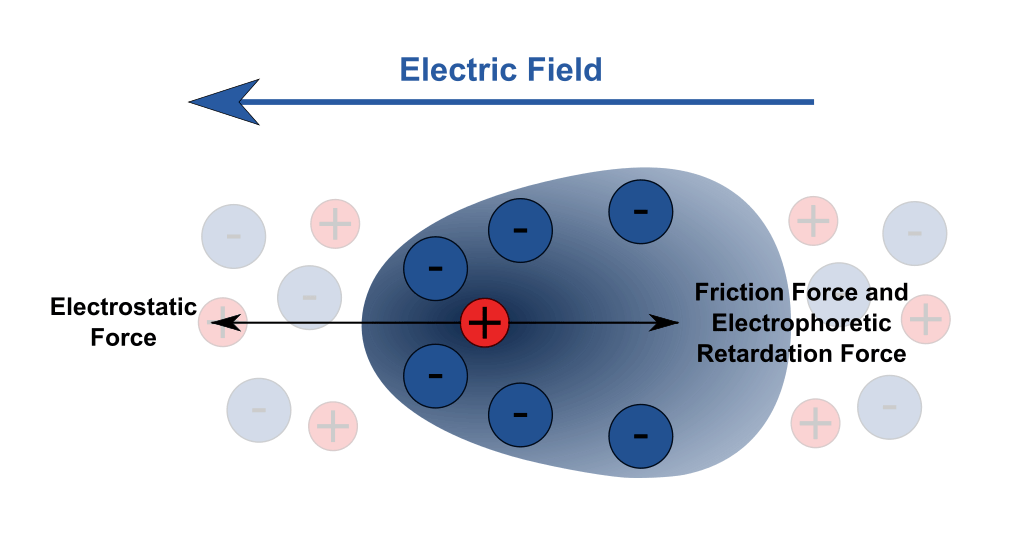Difference Between Cataphoresis and Anaphoresis
Table of Contents
The key difference between cataphoresis and anaphoresis is that cataphoresis is the electrophoresis of cations, whereas anaphoresis is the electrophoresis of anions.
Electrophoresis is an analytical technique we can use to analyze a sample using the electrical properties of the chemical species present in that sample. In this method, we can observe the motion of the dispersed solute in the medium analyzed. Therefore, it is important in determining the motion of the chemical species relative to the medium.
CONTENTS
1. Overview and Key Difference
2. What is Cataphoresis
3. What is Anaphoresis
4. Side by Side Comparison – Cataphoresis vs Anaphoresis in Tabular Form
5. Summary
What is Cataphoresis?
Cataphoresis is the electrophoresis of cations. That means, this analytical technique involves the movement of cations (electrically positive charged ions) towards the cathode. This process is important in coating metals to get a highly resistant surface to atmospheric agents.
Furthermore, this technique is mainly useful in steering and suspension parts where cataphoresis is used as an electrocoating process of paint onto various steering components. Also, this type of coating can increase the anti-corrosive properties of these metal parts, and it is usually the standard method for auto parts where we need complete and optimal antirust protection.
Moreover, cataphoresis uses an electrical current to deposit paint on a part or an assembled product. This method can coat even complex metal parts and assembled products considering the specific requirements according to the performance of the metal part. Therefore, this method is used in various applications such as agricultural equipment, appliances, automobiles, automotive parts, marine components, transformers, metallic office furniture, and garden equipment.

The process of cataphoresis includes a pretreatment, where parts are cleaned and coated with phosphate. This step is essential because it gives the metal part the desired finish. Most commonly, iron and zinc phosphates are used. The method of pretreatment is either by spray booth or immersion.
During the second step, there are dip tanks containing about 80% deionized water and 20% of paint solids. Water acts as a carrier for paint solids. The amount of voltage dictates the thickness of paint coating during the cataphoresis. The next step involves rinsing. The rinsed paint solid particles return to the dip tank, ensuring optimum efficiency. After the rinse tank, the parts are baked in an oven, which cures the paint to ensure maximum performance. The temperature of the oven depends on the system used for the cataphoresis.
What is Anaphoresis?
Anaphoresis is the electrophoresis of anions. That means, anaphoresis includes the movement of anions towards the anode. It has many uses in medicinal applications such as skin treatments. Estheticians use anaphoresis to facilitate deep pore cleansing. In this method, they use a galvanic current to create chemical reactions that can emulsify or liquefy sebum and debris of skin. This treatment is popular for oily skin and skins having acne because this technique helps to soften and relax the debris in the follicle. Desincrustation is a specifical name for this method.
Further explaining this process, it requires an alkaline-based electronegative solution that is placed onto the surface of the skin. This solution helps to soften the sebum and follicles for deep pore cleansing. Thereafter, when conducting anaphoresis, the client (who’s skin is to be cleansed) holds a positive electrode while the esthetician holds the negative electrode on the face of the client. Then a chemical reaction that can transform the sebum into soap (saponification) is activated. When the electric current interacts with the salt components on the skin, it creates sodium hydroxide (because skin mostly has sodium chloride as a salt component). This sodium hydroxide helps in dissolving excess oil, clogged pores and other debris on the skin, followed by softening the skin.
What is the Difference Between Cataphoresis and Anaphoresis?
Both cataphoresis and anaphoresis are types of electrophoresis. The key difference between cataphoresis and anaphoresis is that cataphoresis includes the electrophoresis of cations, whereas anaphoresis includes the electrophoresis of anions. Furthermore, cataphoresis is basically used in coating paint on metal part surfaces while anaphoresis is important in treating oily skin and skin with acne. So, this is another significant difference between cataphoresis and anaphoresis in terms of application.
Below is a summary of the difference between cataphoresis and anaphoresis.

Summary – Cataphoresis vs Anaphoresis
Both cataphoresis and anaphoresis are types of electrophoresis. The key difference between cataphoresis and anaphoresis is that cataphoresis includes the electrophoresis of cations, whereas anaphoresis includes the electrophoresis of anions.
Reference:
1. “What Is Cataphoresis?” FAI Auto, 8 Feb. 2018, Available here.
Image Courtesy:
1. “Motion by electrophoresis of a charged particle” By Daniele Pugliesi – File:Moto di uno ione in un elettrolita.svg (my work) (CC BY-SA 3.0) via Commons Wikimedia
ncG1vNJzZmivp6x7pbXFn5yrnZ6YsqOx07CcnqZemLyue8OinZ%2Bdopq7pLGMm5ytr5Wau26vwK2YqaCfp7K0tdJmmKecXZa7orzHqKmeq5mofA%3D%3D